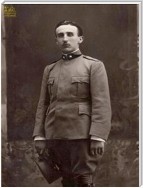Ann Radcliffe

Ann Radcliffe (née Ward, 9 July 1764 – 7 February 1823) was an English author and pioneer of the Gothic novel. Her style is Romantic in its vivid descriptions of landscapes and long travel scenes, yet the Gothic element is obvious through her use of the supernatural. It was her technique " the explained supernatural," the final revelation of inexplicable phenomena, that helped the Gothic novel achieve respectability in the 1790s. Very little is known of Ann Radcliffe's life. In 1823, the year of her death, the Edinburgh Review, said: "She never appeared in public, nor mingled in private society, but kept herself apart, like the sweet bird that sings its solitary notes, shrouded and unseen." Christina Rossetti attempted to write a biography about her life, but abandoned the project for lack of information. According to Ruth Facer: "Physically, she was said to be 'exquisitely proportioned' – quite short, complexion beautiful 'as was her whole countenance, especially her eyes, eyebrows and mouth.'" Radcliffe was born as Ann Ward in Holborn, London on 9 July 1764. Her father was William Ward, a haberdasher, who later moved to Bath to manage a china shop. Her mother was Ann Oates. In 1787, she married Oxford graduate and journalist William Radcliffe, part-owner and editor of the English Chronicle. He often came home late, and to occupy her time she began to write and read her work to him when he returned home. They were childless, but seemingly happy marriage. Ann called him her "nearest relative and friend." The money she earned from her novels later allowed them to travel together, along with their dog, Chance. When Ann died on 7 February 1823, there were some reports that she was insane. Her husband claimed that she died of an asthma attack. Despite the acclaim for her writing, she did not maintain a public profile. There are few artifacts or manuscripts that give insight into Radcliffe's personal life, but in 2014 a rare letter from Radcliffe to her mother-in-law was found in an archive at the British Library. Its tone suggests a strained relationship between the two, similar to the relationship of two characters in her novel The Italian.
 čeština
čeština Deutsch
Deutsch français
français magyar
magyar polski
polski русский
русский English
English Azərbaycan
Azərbaycan беларуская
беларуская italiano
italiano ქართული
ქართული қазақ
қазақ Nederlands
Nederlands português
português slovenčina
slovenčina español
español 中文
中文






















